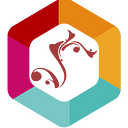Seattle Web Design Horror Stories:
Lessons Learned
Web design is not just about aesthetic appeal; it’s the backbone of a user’s digital experience. Even the tiniest missteps can lead to massive consequences within this intricate dance of colors, typography, and layout. Seattle’s tech-savvy environment is no stranger to web design disasters. This post explores cautionary tales that can impart valuable wisdom to web designers, small business owners, and SEO specialists.
Let’s dissect these horror stories to glean the lessons that can prevent your next project from becoming a digital nightmare.
The Broken Navigation: A Labyrinth of Choices
Imagine steering through the emerald waters of Puget Sound without a compass — that’s how users felt on The Odyssey — a metaphorical ship we will call a local real estate website. The platform’s navigation was a complex maze with ambiguous labels and dead ends.
The Frustrating User Journey
Users were met with a navigation bar more complex than the city’s famed spaghetti junction. Dropdown menus led to more dropdown menus, each with links to pages that seemingly looped back on themselves. It wasn’t long before would-be customers fled, leaving a trail of empty virtual house tours in their wake.
Collateral Damage
Analytics bore the gory details: increased bounce rates, abysmal session durations, and a user exit rate that cried out for help. The site’s visibility on the mighty mountains of SERPs (Search Engine Results Pages) was lost in the fog, obstructing the path to conversion and ROI peaks.
The Slow Loading Speed: Waiting for the Rain to Stop
Slow website loading speed is the equivalent of Seattle’s traffic congestion during a rain-doused rush hour. Caffeination Hub, a beloved local coffee shop’s website, provides an online user experience as slow as waiting for your morning espresso on a busy Monday.
The Drenched User Expectations
As inviting as the aroma of roasted coffee beans, the website’s homepage featured high-definition images of latte art and cozy nooks. However, these graphics were as heavy as the city’s rainclouds, resulting in load times that made visitors wonder if the coffee might grow cold waiting for the site to appear.
The SEO Downpour
Search engines, like hurried commuters, need more patience for dawdling. Caffeination Hub plummeted in rankings faster than an umbrella turning inside out against the Puget winds. Load times proved inversely proportional to page rank, and soon, the site was buried beneath speedier competitors.
The Cluttered Layout: A Market of Distractions
Into the fray stepped Emerald Bazaar, a startup’s attempt at an eclectic online marketplace inspired by the sights and sounds of Pike Place Market. But what works charmingly for a physical location descended into chaos when replicated virtually.
The Visual Pandemonium
Products were thrown together recklessly — antique watches wrestled for attention amidst artisan soaps and novelty socks. The cluttered layout confused users more than Seattle’s unpredictable weather patterns, making them question whether they were shopping or being swept into a visual tornado.
Conversion Rates Caught in the Storm
Online shopping carts remained as empty as the city’s streets on a Seahawks game day. The lack of decluttering translated to a significant dip in sales, demonstrating the apparent absence of a method to the online madness.
Lessons Learned: Redeeming Your Cyber Space
Several truths rose like the Space Needle against the skyline from the trenches of these internet mishaps.
The User-Centric Compass
User-centric design should guide your journey through digital space. Like a trusty GPS, it ensures the user’s path remains clear and destination-focused, avoiding the abyss of ‘The Odyssey.’
Responsive Design: The Architecture of Adaptability
Much like Seattle’s versatile fashion sense, responsive design is indispensable in today’s mobile-first world. The lack of it in the Caffeination Hub restricted its outreach as roadworks limit traffic flow. Websites must fluidly translate between devices, as responsive as the city to its vibrant tech industry’s needs.
Speed: The Elevator to Success
The delays experienced at Caffeination Hub were alarming but avoidable. Compressing images, optimizing files, and choosing the right hosting can be the difference between a rapid elevator ride to the top and a slog up the stairs.
Navigation: The Map to Treasure
A website’s navigation is a treasure map; if X doesn’t mark a clear spot, users won’t dig. Simplifying The Odyssey’s navigation may have led to many leads and conversions.
Conclusion: Charting a Course to Better Design
Every horror story has its moral, and the lessons in Seattle’s web design odyssey are apparent. Whether navigating through the bustling digital waters or crafting an experience for the intrepid user explorer, the principles of clarity, speed, responsiveness, and user focus should shape the contours of your voyage.
As we weather the virtual storms together, remember these tales for their shadowy recollections and the light they shed on creating stellar online experiences. Prioritize your user’s journey, and professional web design may be the guiding star to your website’s success.
